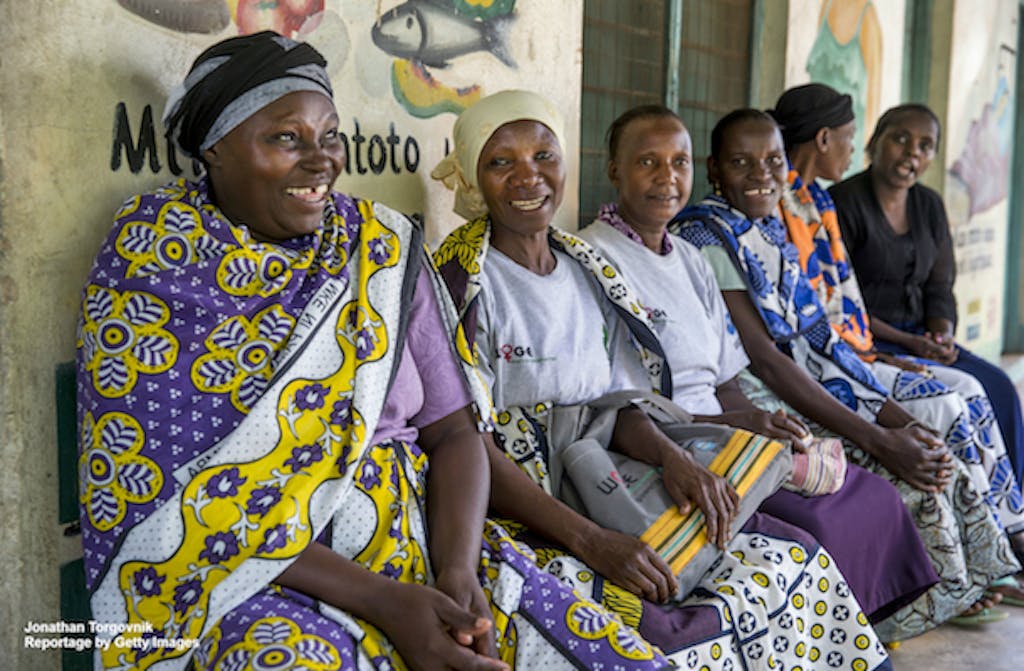
This post is co-authored by Geeta Rao Gupta, Executive Director of the 3D Program for Girls and Women, UN Foundation and Michelle Milford Morse, Vice President for Girls and Women Strategy, UN Foundation.
As the international community gathers at the United Nations for the annual Commission on the Status of Women, it’s a fitting time to ask, “What is the status of women in the world?” The short answer: Despite the incredible progress women have made, we are experiencing a strong backlash, which we must resist if we are to keep moving forward to achieve gender equality.
One hundred years after the first International Women’s Day, more women are working, going to school, getting elected, and assuming leadership positions than ever before. However, the march for equality is far from over. The World Economic Forum’s 2017 Global Gender Gap report estimates it will take another 200 years to close the gender gap between women and men on economic participation and opportunity, educational attainment, health and survival, and political empowerment. Additionally, UNFPA’s 2017 State of the World’s Population report finds that 68 countries had larger gender gaps in 2016 than in 2015.
Progress is rarely a straight path forward: Change is often met with resistance. While I used to describe the march toward gender equality as two steps forward, one step back, increasingly it is two steps forward, three steps back!
To keep the momentum for equality moving forward, we must identify the root causes. What is pushing us three steps back? Here are a few of the roadblocks we must overcome:
- The misperception that the sharing of political and economic power is a zero-sum game; that giving more power to some, means less power to others. While that may be true in the short-term, we know from research that when women gain access to economic resources and leadership opportunities, they use their leverage and increased earnings to invest in the health, nutrition, education, and well-being of their children and families. Investing in women and increasing their power pays dividends for all. The McKinsey Global Institute estimated in 2015 that advancing women’s equality can add $12 trillion to global growth.
- Damaging gender norms continue to impose a cost on women and men. If the cultural definitions of masculinity continue to emphasize dominance and power over compassion and respect, everyone loses. For women, we see the costs of toxic masculinity in continued abuse, mistreatment, and disrespect. For men, toxic masculinity leads to homophobia, higher rates of mortality, and lower life expectancy for men as compared to women.
- The lack of funding to sustain grassroots momentum. Creating and sustaining meaningful opportunities for girls and women takes time, effort, and organization – all of which require resources. In the lead up to the landmark United Nations conferences in Cairo and Beijing in the 1990s, funding existed for grassroots groups, but that level of support has been dropping over the years, leading many grassroots women’s organizations to struggle for survival. A review of financial support given by major donor countries, conducted by Gendernet found that just 0.5% of the billions of dollars allocated to promote gender equality in poorer countries in 2014 was given to grassroots women’s organizations, down from 1.2% in 2011.
- Gaps in data on girls and women. If we don’t count women, women don’t count. According to Data2x, less than a third of countries disaggregate statistics by sex on informal employment, entrepreneurship, violence against women, and unpaid work.
With the barriers to progress in full view, we can navigate toward gender equality. At this point in the journey, we are well beyond the “why” of gender equality – why rectifying equality is a good thing. It is time to now focus on the “how” – specify the actions on how we get there from here. This includes:
- Focusing on the most vulnerable, those who are left furthest behind, such as women living in poverty or in conflict and humanitarian settings or those who are discriminated against because of their race, ethnicity, or sexual identity. Those are the girls and women who bear the largest burden of disadvantage and need economic and other resources and opportunities, as well as safe spaces to organize and strategize.
- Collecting and using quality data and evidence to give policymakers the solid evidence base they need to uproot damaging norms and implement effective policies. For example, long-term data on the benefits of women in elected positions can alter the “zero-sum” view, and more research on toxic masculinity can lead to initiatives that end it.
- Investing in grassroots movements to push for change. The women’s movement is now connected to many other related movements – gay rights, youth, men against rape, and other movements. And that is a good thing because the diversity of purpose, with equality and social justice as the ultimate goal, is what is needed to achieve progress. After all, it is not just about girls and women – even though they bear the costs of inequality and disadvantage – it is about all of society and who we are as a people.
- Changing norms early. Pre-adolescence and adolescence are important points for intervention because that is when gender norms are crystalized. It is for this reason that leadership of young people is critical. It also adds new voices and vital perspectives. Additionally, marketing by corporations, representations by the entertainment industry, and messages reinforced by the media shape gender norms both intentionally and unintentionally. We must identify the ways to incentivize those larger forces for good.
Gender equality has come a long way but still has a long way to go. With a clear roadmap, we can advance. Progress is never perfectly linear, but the energy and momentum that backlash and resistance generate keep us energized and fighting for even greater progress.



 View All Blog Posts
View All Blog Posts